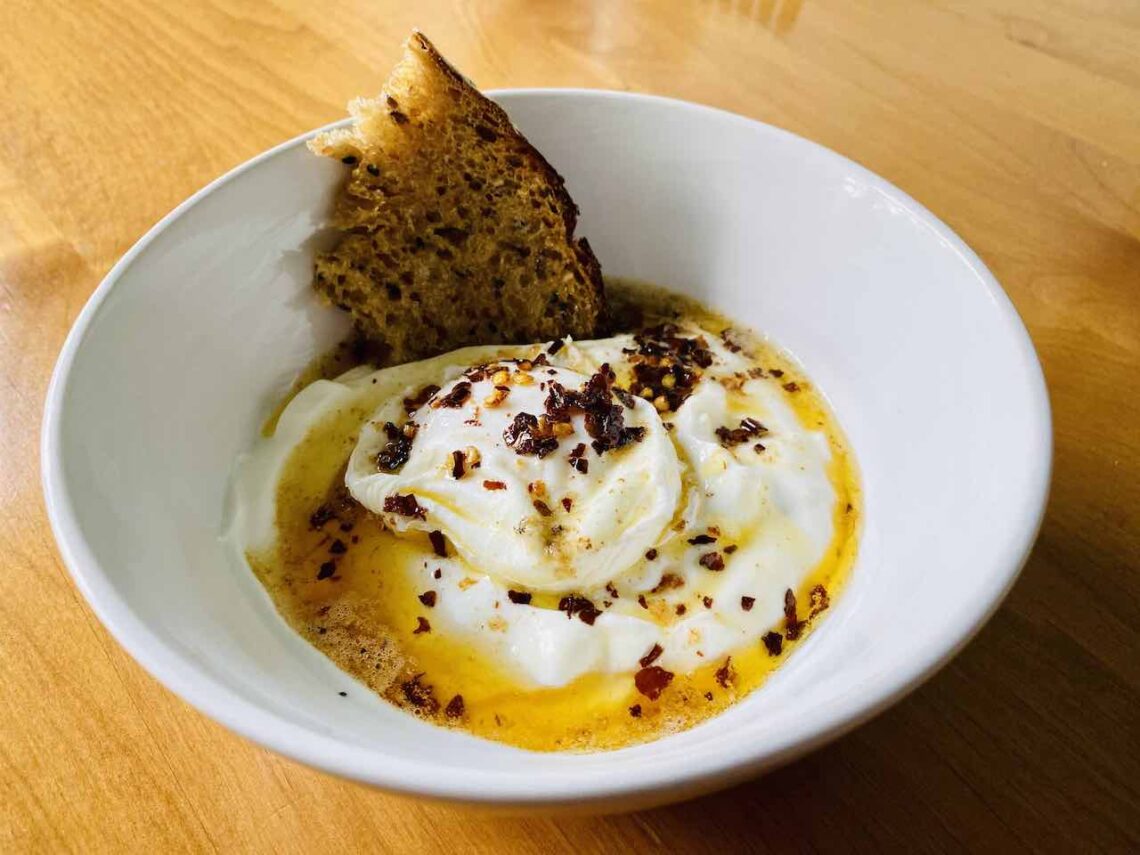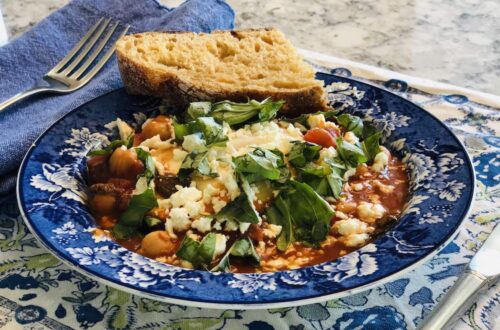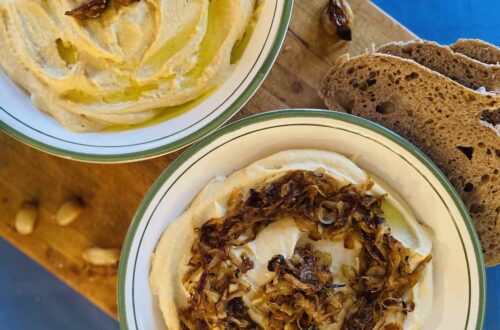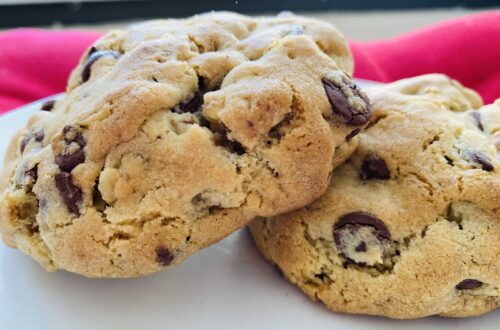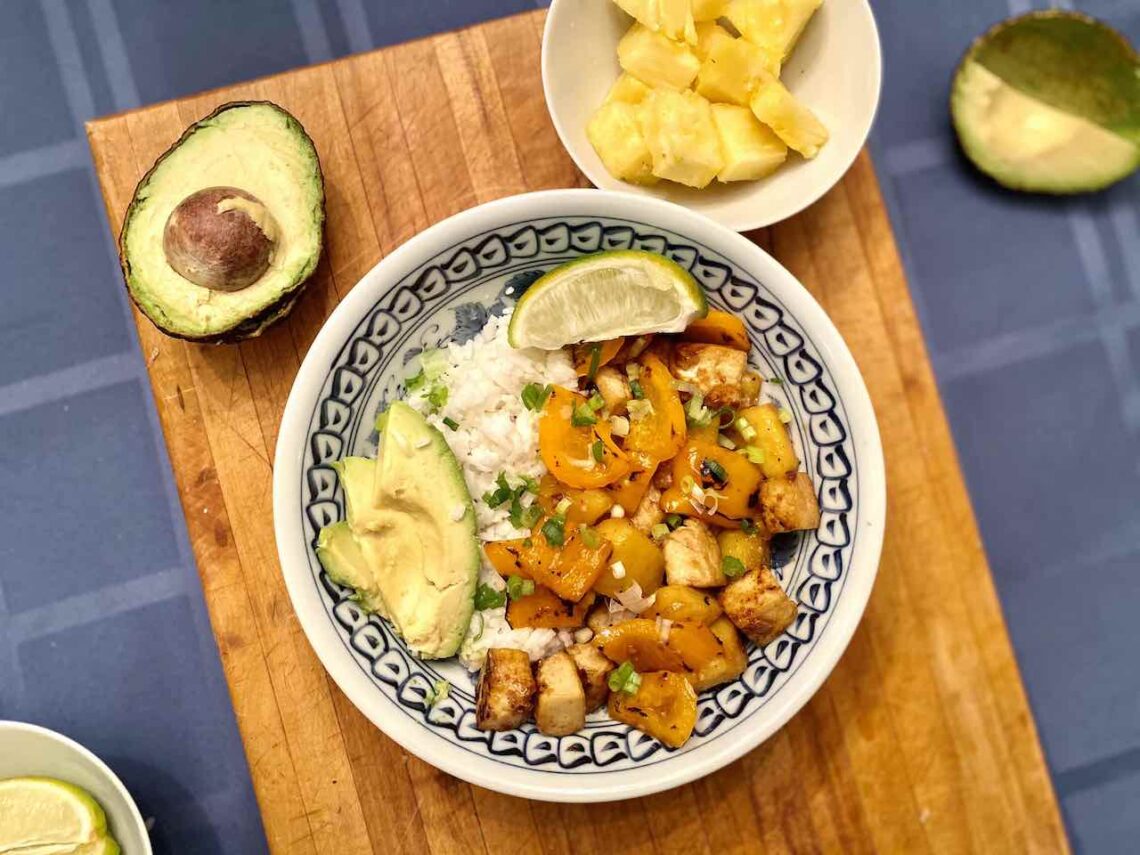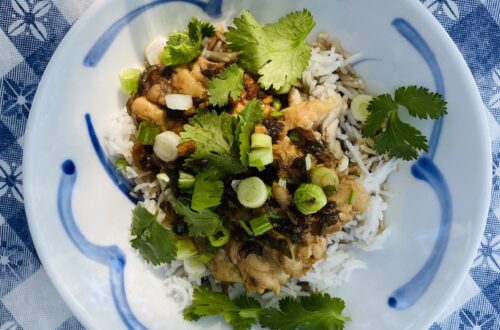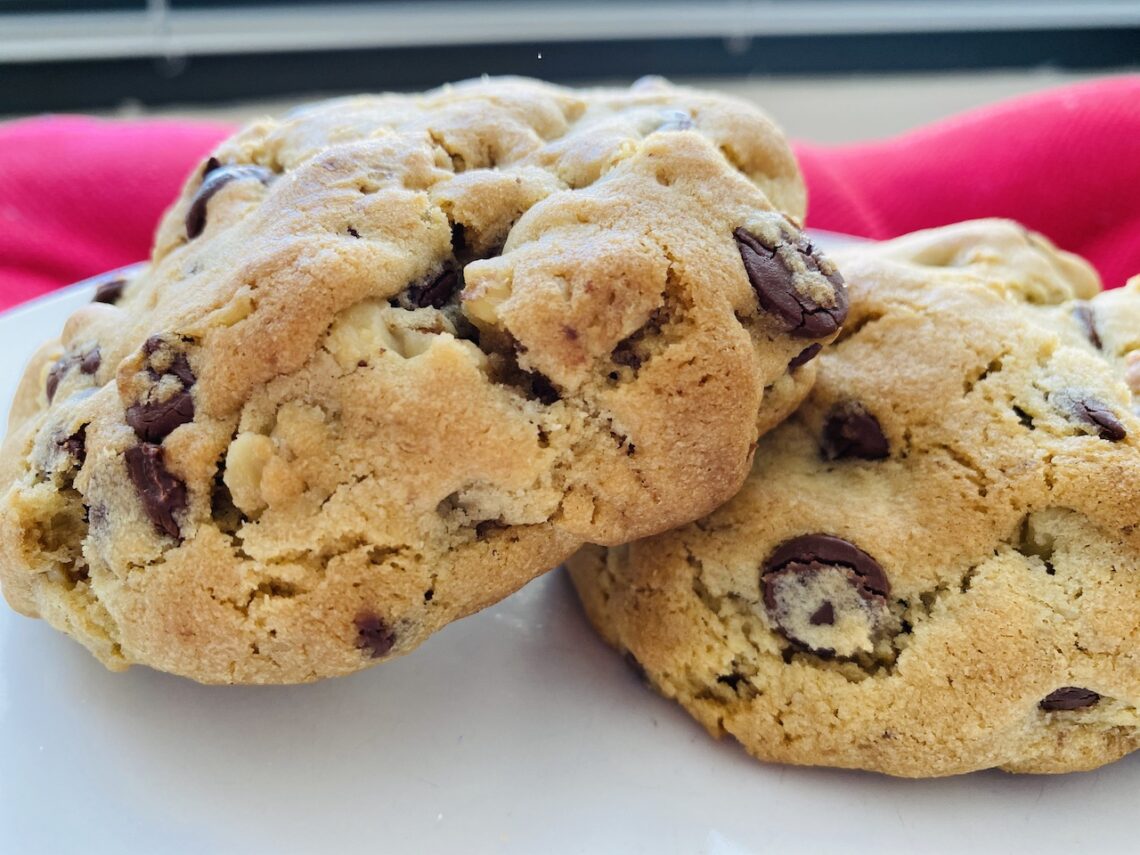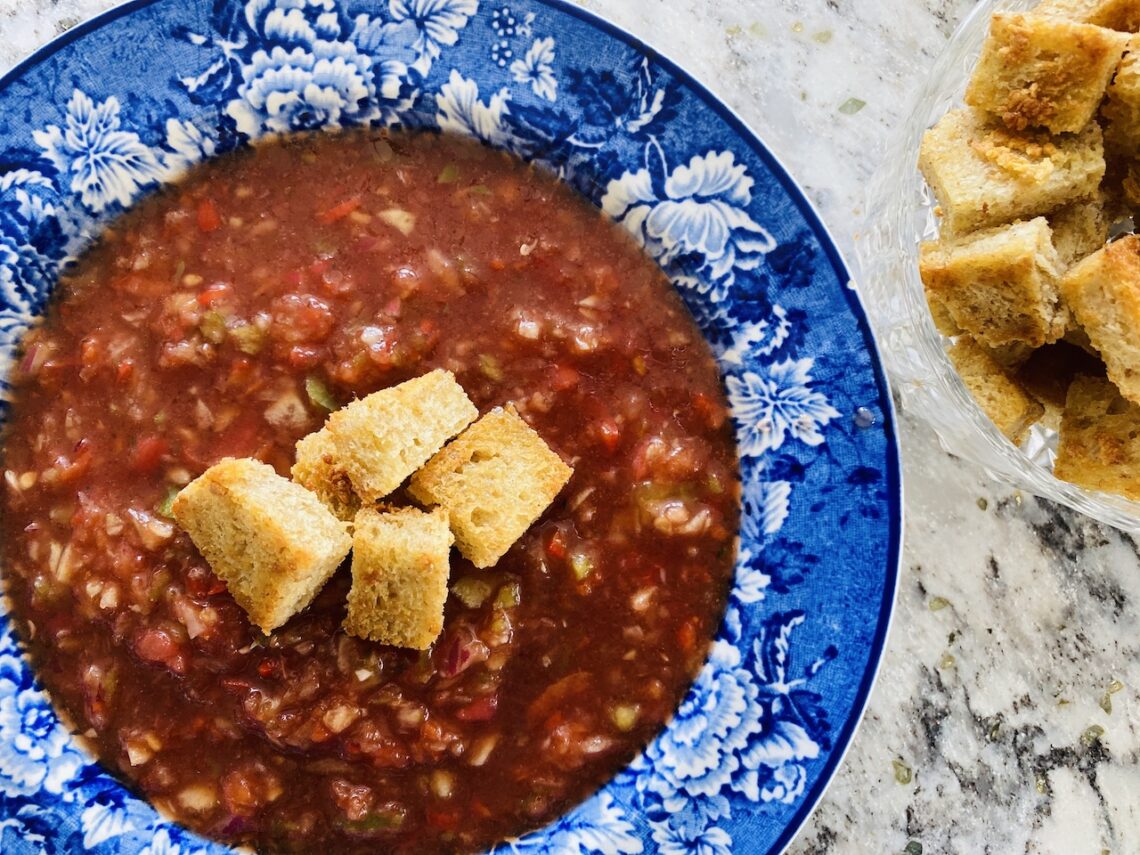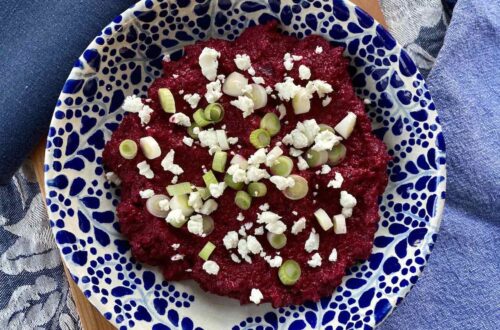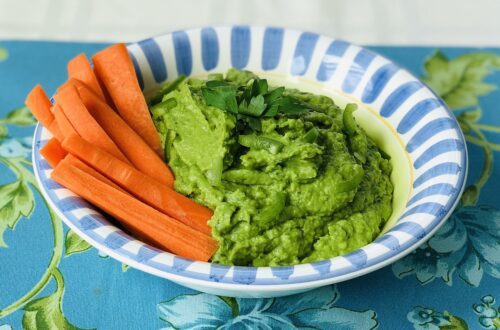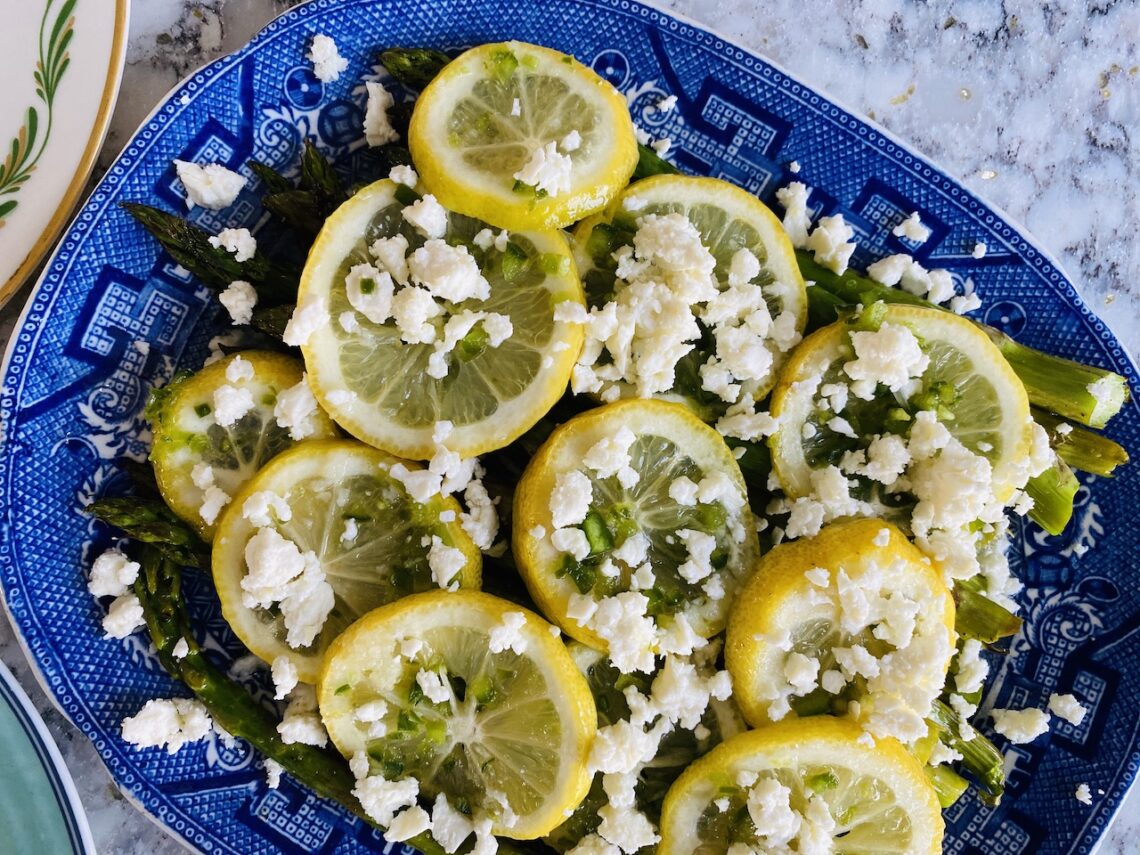-
Flourless Chocolate Cake
This cake is perfection. It’s dense, but not too intense, enticing you to eat just another small bite again and again … and again … until you’ve actually eaten quite a large slice (or, perhaps, the whole cake). Everyone loves this cake. It’s the perfection of gluten-free: you don’t notice that there’s no flour in it, just that it’s like eating rich chocolate clouds.
However, when I went back and looked at the ingredients, I realized how unethical a cake it is. Cocoa. Sugar. Butter. Almonds. Eggs. Other than water and salt, almost all the ingredients in this cake have a variety of problems in their supply chains. (The cocoa supply chain relies on forced labor, child labor, and causes deforestation, among other issues; sugar production relies on forced labor and often harms the environment; butter produces greenhouse gases and often has labor abuses – you get the idea.)
-
Eggs with Yogurt and Chile Butter
I love Sunday morning breakfasts. Whether I am out with friends, visiting my parents, or having a quiet Sunday morning at home, it’s one of my favorite times of the week. A couple of weeks ago, a recipe for eggs with yogurt and chili butter in Yasmin Khan’s newest cookbook, Ripe Figs, caught my eye, and it looked simple enough – yogurt, eggs, and a buttery sauce. It was, in fact, straightforward, as poaching an egg is surprisingly easy with good directions. (One warning: the dish does use a surprising number of dishes for such a simple recipe.) The result was perfectly creamy, light, delicious, and filling – the perfect Sunday morning breakfast. This recipe is for one person, but you can easily scale it up for however many servings you’d like. Just remember to get some hearty and crusty bread to dip in the yogurt and egg.
This post focuses on the dairy industry in the US and specifically on the brand Chobani yogurt. (Yogurt that, unfortunately, I really like.) Chobani has cultivated an image as a socially-responsible company while greenwashing and social-washing its products. (Greenwashing is when a company makes it seem like it’s environmentally-friendly through marketing without changing its core practices; social-washing, though not as prevalent a term, refers to when companies market their commitments to labor and human rights but fail to make real changes to benefit their workers.) This year, Chobani went all out with greenwashing and social-washing by adding a “Fair Trade USA” label to its yogurt. Fair Trade USA is a certification body that puts its label on a variety of agricultural products as a sign that the goods are (allegedly) produced according to certain environmental and labor standards. The problem, however, is that the standards are often weak – and goods are often not produced according to their standards.
-
Sweet Potatoes, Lentils, and Spinach Red Curry
All of a sudden, summer has arrived in Chicago, along with a sense that we are returning to some semblance of normalcy. Instead of walking dates, there are dinners inside and out as we reunite with people we haven’t seen since before the pandemic began. There is a part of me that can’t believe this can resume: being unmasked inside when everyone is fully vaccinated, returning to travel, going out to dinner again.
While Covid has shown just how unpredictable the future can be, the need to cook meals each week remains constant. In the last couple of weeks I’ve been going into the office again, which means I need to make lunches in advance. This sweet potato curry is a go-to recipe for lunch – it travels well, heats up easily, and makes a filling meal. While this is really more of a winter stew (I intended to post it back in February, when it was still dark and cold outside…whoops), it’s good enough to eat at any time of year.
-
Hazelnut-Raspberry Macaroons
When I lived in Germany, I learned one very important thing: Christmas is a really big deal. Christmas markets spot the city, advent wreaths with candles sit on dining room tables, and the whole country shuts down for two and a half days at Christmas. Plus, there are Christmas cookies. I had always thought that Christmas cookies were those sad little sugar cookies that you decorate with colored frosting that no one enjoys eating. But the variety of cookies for a German Christmas was so much more interesting and exciting.
These hazelnut-raspberry macaroons come from one of my favorite cookbooks, Luisa Weiss’s Classic German Baking, one of the few cookbooks to make German baking accessible to an American audience (and pantry). This cookie is a new favorite – it’s light and fluffy, with a good mix of tart from the jam and sweet from the cookie.
-
Rugelach
In honor of Hanukkah, I made rugelach this week. Having never eaten homemade rugelach, I only had memories of dry, crumbly cookies. But the pandemic has instilled in me a desire to hold on to traditions – even ones I’ve never followed before. These small, crescent-shaped cookies are perfect for cold December evenings. They are flaky, crunchy, and just the right amount of sweet. (I gave some to a 90-year-old friend, Polly, who said they “tasted like Hanukkah.”)
Enough about rugelach – and on to this week’s ingredient: sugar. Sugar comes from both sugarcane and sugar beet. Unfortunately, both supply chains are rife with environmental and labor abuses, including forced and child labor. According to the US Department of Labor, sugarcane and sugar beet are both produced with forced and/or child labor in at least 20 countries across Asia, Africa, and Central and South America.
-
Sweet and Sour Tofu and Pineapple
One evening a couple of years ago, I trudged through the snowy and muddy New England streets and arrived at my friend’s house for dinner, where she welcomed me with a dish that tasted like summer. The day had felt interminable, but then this wonderful friend was there with love, laughter, and a delicious dinner. As someone who at the time lived mainly on meatballs, Bolognese sauce, and a lot of eggs (fried, soft-boiled, scrambled, in ramen, on top of tortillas, on top of more tortillas), this fresh tofu dish was the best gift I could have asked for.
As the days get darker and colder and social distancing continues unabated, we all need a way to pretend that it’s summer, even if just for a few minutes. That’s what this dish does. It combines crispy tofu with pineapple and a sweet and sour sauce that is both cozy and reminiscent of warmer times of year. This dish has recently become a staple in my family and has convinced certain people to eat – and even enjoy – tofu.
-
Levain Chocolate-Chip Walnut Cookies
Today’s topic is cocoa. Full disclosure: I spend a lot of my real working life working on issues related to child labor in the cocoa industry, which made it was really hard to keep this post short. (Sorry!) For weeks I’ve been searching for the right recipe for chocolate – something a little different, but not too difficult. Luckily, last week a friend raved to me about Levain cookies. Levain cookies come from New York City’s Levain Bakery, which apparently is very well-known. As a true Midwesterner, I had never heard of the bakery or the cookies, but was fascinated by the idea of a chocolate chip cookie the size of a small cake. I have no idea if these cookies actually taste like the ones at Levain Bakery, but I do know that they are incredible – and really intense. After giving away one, I pretty quickly received a text message: “Oh my God, that cookie is amazing.” They truly are. These cookies should be just cooked, golden brown on top and still gooey in the middle.
But enough about the cookie. Let’s focus on the cocoa industry, which like many commodities, has a largely hidden supply chain and a number of human rights issues. Cocoa beans are found in cocoa pods, which grow on trees. These cocoa trees can only grow in certain latitudes – between 20 degrees north and 20 degrees south of the equator. Much of the world’s cocoa – at least 60 percent – is produced in Cote d’Ivoire and Ghana. This includes most “bulk” cocoa that goes into candy, chocolate chips, Nutella, and most of what you probably buy. Unfortunately, the West African cocoa industry has numerous problems, including low wages for farmers, high incidences of child labor and forced child labor, and it is a leading cause of deforestation in Cote d’Ivoire.
-
Blueberry-Peach Pie
When I was a child, vacation meant pie. Key lime pie, strawberry rhubarb pie, but most importantly, blueberry peach pie. In my memory, this was the perfect pie: not too sweet, just tart enough, with a flaky crust. We would pick it up from a pie stand on the side of the road and I would hold it carefully on my lap on the ride home, feeling the heat from the freshly baked pie through the container. That pie stand disappeared some years ago, but since then I’ve been trying to recreate this perfect pie. I’ve spent years trying out different crusts – all butter, with vodka, butter and shortening – but just one tablespoon of apple cider vinegar here makes all the difference. The filling is sweet but still a little tart, with no cornstarch and no frozen berries: just the best pie dough I can imagine with that perfect mix of blueberries and peaches.
Blueberries are the focus today, since here in the Midwest we are at the height of blueberry season. The US is the world’s largest producer of blueberries, producing an estimated 690 million pounds in 2016. Despite the large domestic production, the US is actually a net importer of blueberries, due to the large imports during the winter months when they don’t grow in the US. In 2017, the US imported 137.8 million pounds of fresh blueberries, over half of which came from Chile.
-
Gazpacho
Gazpacho is one of the true joys of summer, along with picnics in the park and reading on the beach. As July begins and real summer hits Chicago – hot and humid, and miraculously, this year perfectly sunny – it’s time for gazpacho. For years my mother made this recipe and I always loved it. When I finally asked her for it, I realized just how simple it is. You chop up some vegetables and mix them together with liquid, and then wait for the soup to get cold. That’s it. But despite its simplicity, there’s something special about it – especially when you add the crunch of the croutons to it.
I’ll stop raving about the gazpacho and get to the main ingredient: tomatoes. I know that I’ve already written about tomatoes and that there are a lot of ingredients I haven’t yet discussed. But it’s the middle of summer and a great time for socially distanced picnics, so I want everyone to be able to enjoy this recipe. For this post, I focus on tomatoes from Italy, which is a large producer of processed tomatoes. In 2018 Italy exported 1.74 billion Euros worth of processed tomatoes – 53 percent canned tomatoes, 35 percent tomato paste, and the remaining 12 percent of tomato sauce.
-
Roasted Asparagus with Pickled Lemon and Feta
I love asparagus. Green asparagus, white asparagus, even purple asparagus. I could easily eat it every week and never tire of it. I love it with my mother’s hollandaise sauce and with this easy buttery caper sauce. But my favorite way to eat it right now is with this pickled lemon and feta, a simple recipe from the Chicago restaurant Avec. It’s lemony, a little bit spicy and salty, but still allows the asparagus to come through.
Growing up in Chicago, I always knew that Michigan grew a lot of asparagus, but I didn’t realize just how much. Michigan is currently the largest producer in the US, producing as much as 23 million pounds each year. Being this close to Michigan means that our local grocery store and every farmer’s market sells fresh, Michigan asparagus – even though most of the asparagus sold in the US these days is actually imported from Peru and Mexico. (Between 2004 and 2014, the amount of asparagus grown in the US decreased dramatically – by one estimate, by 64 percent – in large part due to these cheaper imports.)
The asparagus season is winding down, but before it ends completely I wanted to grab this moment to talk about labor conditions in the asparagus industry. Although I just spent the past couple of months enjoying my local Michigan asparagus, I actually want to focus on asparagus grown in Germany, where eating white asparagus in the spring is a national pastime. I had never eaten white asparagus until I moved to Germany. But in Germany, every year in late spring, restaurants starts to list asparagus – Spargel – as the special. Markets and grocery stores sell it, and everyone gets really excited about Spargelzeit (asparagus time). I never learned to cook the white kind, but my wonderful roommate would cook it with prosciutto and potatoes – and it was always delicious!




